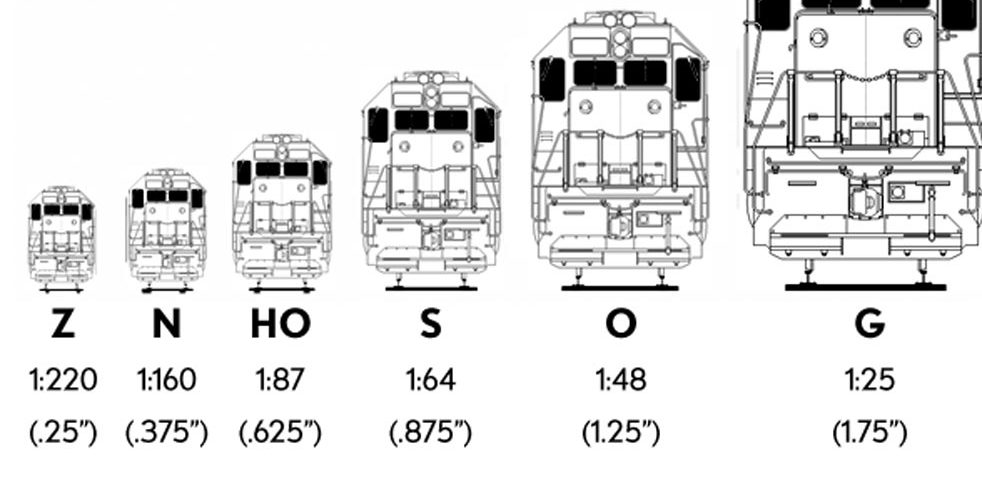Learn your scales!
January 29, 2019

Model trains are almost as old as the railroad industry itself, dating back almost 150 years. In the beginning, the trains were more like toys and there was virtually no compatibility between brands. As time passed, however, manufacturers started building standard scales which are outlined below:
G scale trains were introduced by Lehmann Big Trains in the 1960s. This scale is often used for outdoor garden railways because of the size resilience. G scale is known to take up a LOT of room (as you can tell by our display!) and often times the layouts run through gardens where guests can enjoy the scenic elements as well.
O scale became popular after the first world war. Lionel first produced electric toy trains in America where the rails were 2.125” apart, which is known as standard gauge. Many toy trains run on the three-rail track, which allows for more complex track layouts to be built without complicated electrical wiring.
S Scale became popular between the two world wars. It was a newer, smaller, model train which was popularized by American Flyer. What’s unique about this scale is that they run on a more realistic looking two-rail track instead of 3 rail.
HO scale became popular in the U.S. around the 1930s. The abbreviation “HO” stands for “half of O.” These trains were less expensive and took up less space than the O scale model trains.
N scale didn’t make it to the U.S. until 1967. The designation “N” is short for “nine,” which refers to the 9mm gauge between the rails of N scale track.
Z scale model trains in came about in 1972 and were named “Z” since it was assumed no smaller trains could be made. It started out as a novelty, but has quickly gained it’s own following.

 Tickets
Tickets Parties
Parties Shop
Shop Directions
Directions